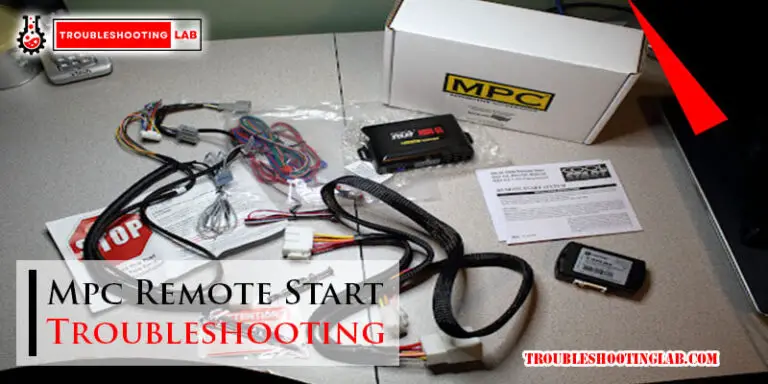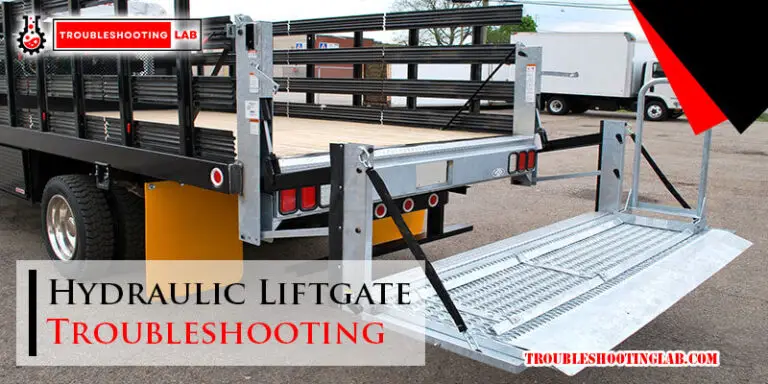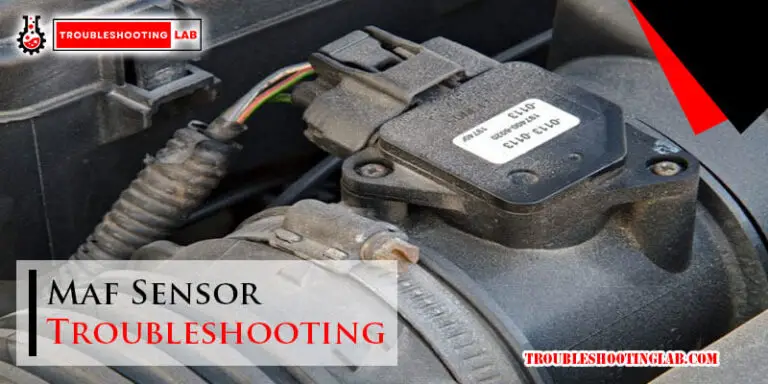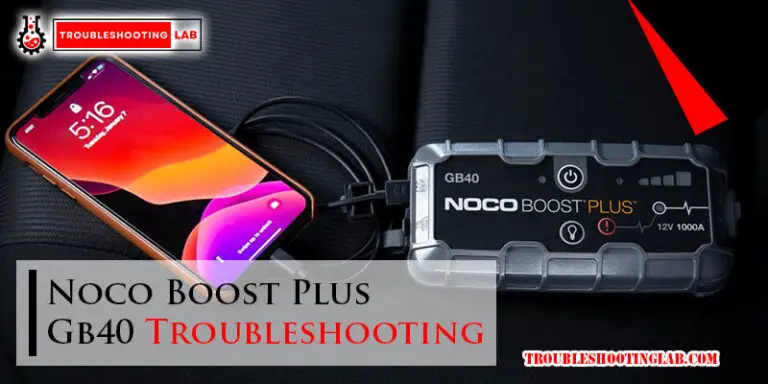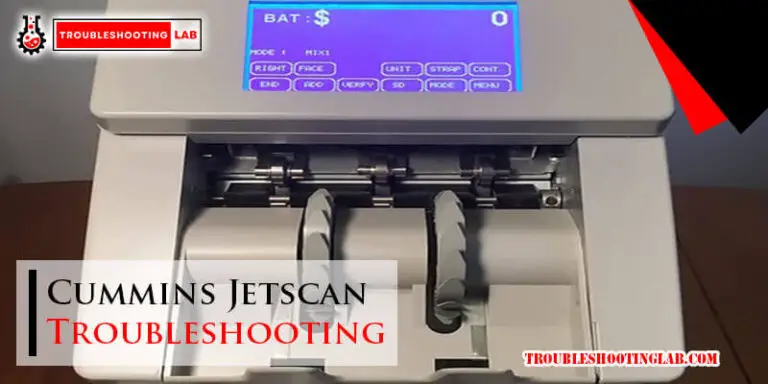Cannon Safe Troubleshooting: Quick Fixes for Security
Is your Cannon Safe giving you trouble? Maybe it’s not opening as it should, or the keypad isn’t responding.
Whatever the issue, it’s frustrating—especially when what’s inside is important to you. Don’t worry, though. You’re not alone, and there are often simple solutions to get things back on track. In this guide, we’ll walk you through common problems and how to fix them step-by-step.
By the end, you’ll know exactly what to do to regain access to your safe without unnecessary stress. Ready to solve the problem? Let’s get started.
Common Issues With Cannon Safes
Cannon safes are trusted for their durability and security. Yet, like any equipment, they may encounter occasional problems. Understanding these common issues can help you address them effectively. Below, we explore frequent concerns and their possible solutions.
1. Safe Door Won’t OpenThis is a common frustration for safe owners. Sometimes, the keypad may not respond due to dead batteries. Replace the batteries with new, high-quality ones. Ensure the battery contacts are clean and properly connected. If the keypad still doesn’t work, the lock mechanism might be jammed. Gently jiggle the handle while entering the code.
2. Keypad Beeping but Not UnlockingA beeping keypad often points to incorrect code entry. Verify you are entering the correct code. If the problem persists, reset the keypad or consult the user manual. Check for loose connections inside the keypad panel. Secure any loose wires carefully. Avoid forcing the keypad as this could cause damage.
3. Locking Mechanism StuckThe locking bolts may stick due to dust or debris. Clean the locking area with a dry cloth. Apply a small amount of lubricant if necessary. Never use excessive force to turn the handle. This could damage the internal components.
4. Error Codes Displayed on KeypadSome Cannon safes display error codes for specific issues. Refer to your user manual for the code’s meaning. Most errors relate to power issues or incorrect code attempts. Reset the safe by removing the batteries for a few minutes. Reinsert them and try again with the correct code.
5. Safe Handle Feels LooseA loose handle may result from wear or internal alignment issues. Inspect the handle for visible damage. Tighten any screws or bolts if they appear loose. If the problem continues, the internal mechanism may need professional servicing.
6. Forgotten PasscodeForgetting the passcode is a common issue. Refer to your safe’s backup key or override system. Keep this information in a secure location for emergencies. Contact Cannon Safe customer support if you have no backup method.
7. Battery Compartment IssuesThe battery compartment may become corroded over time. Check for signs of rust or debris. Clean the compartment with a soft, dry cloth. Replace damaged battery contacts if necessary. Always use fresh, high-quality batteries for your safe.
Safe Won’t Open
Safe Won’t Open:Few things are more frustrating than standing in front of your Cannon safe, ready to access your valuables, only to find it won’t open. Whether you’re storing important documents, cash, or family heirlooms, an unresponsive safe can feel like an emergency. Before panicking, take a deep breath. Many issues can be fixed quickly with a bit of troubleshooting.
Battery Problems
Sometimes, the simplest issue is the root cause—dead or weak batteries. If your safe won’t open, check the batteries in the keypad first. Even if the keypad lights up, the power might be too low to unlock the safe.
- Replace the batteries with fresh, high-quality ones—cheap batteries can lose charge quickly.
- Double-check the battery compartment for corrosion or loose connections.
- If your safe still doesn’t open, try resetting the keypad after replacing the batteries.
Did you know batteries can drain faster in cold environments? If your safe is stored in a garage or basement, this could be the issue.
Keypad Malfunctions
Keypads can sometimes glitch, especially after heavy use or exposure to dust and dirt. Start by carefully cleaning the keypad with a soft cloth. Avoid using liquids that could seep into the electronics.
- Check if the buttons feel stuck or unresponsive.
- If cleaning doesn’t help, try entering your code slowly and deliberately.
- Still stuck? Your keypad might need a reset or replacement.
Have you ever had tech fail at the worst moment? A faulty keypad can feel like that, but it’s often a quick fix.
Incorrect Code Entry
Entering the wrong code is surprisingly common. If you’re in a hurry or distracted, it’s easy to make a mistake. But repeated wrong attempts can lock the safe temporarily.
- Wait a few minutes before trying again. Most safes have a lockout period after multiple failed attempts.
- Double-check your safe manual for the correct code format.
- Consider keeping your safe code in a secure place to avoid future mix-ups.
Ever written down the wrong code by mistake? It happens. Keeping your code in a secure app or notebook can save you a headache.
Jammed Lock Mechanism
A jammed lock mechanism might be the culprit if your safe refuses to open even with the correct code. Dust, dirt, or physical damage can cause this issue.
- Try gently jiggling the handle or dial—don’t force it.
- If you suspect dirt buildup, use compressed air to clean around the lock.
- Still stuck? You might need a locksmith or Cannon’s customer support.
Ever tried to force open a jammed lock? It rarely ends well. Be gentle to avoid causing permanent damage.
When troubleshooting your Cannon safe, patience is key. One simple fix could be all that stands between you and your valuables. Which of these methods worked for you? Share your experience below—it might help someone else in a bind!
Locking Issues
Are you having trouble with your Cannon safe’s lock? Locking issues can be frustrating, especially when you rely on your safe for securing valuable items. The good news is most problems can be solved with a little troubleshooting.
Let’s break down the most common locking issues and how you can fix them.
Door Not Closing Properly
If your safe door refuses to close, it’s often due to something blocking the way. Check for obstructions like loose items or debris around the door’s edges. Even a small particle can prevent the door from sealing properly.
Another culprit is overstuffing your safe. Have you added new items recently? Excessive pressure against the door can stop it from latching. Try rearranging your items, keeping heavier ones at the bottom for balance.
Finally, inspect the door seal and hinges. A bent hinge or damaged seal can cause misalignment, making the door hard to close. Tightening hinge screws or replacing a worn seal may solve the issue.
Handle Stuck Or Hard To Turn
A stuck handle can feel alarming, but it’s usually a straightforward fix. First, ensure the lock bolts are fully retracted before turning the handle. You may need to spin the dial or enter your code again to reset the mechanism.
Have you noticed any resistance when turning the handle? This could be due to dirt or lack of lubrication. Apply a small amount of lubricant to the moving parts and gently work the handle back and forth.
If the problem persists, check for worn or damaged internal components. Over time, heavy use can wear down the handle assembly. Consider reaching out to Cannon’s customer support for replacement parts if needed.
Bolt Misalignment
Bolt misalignment is a common issue that can leave your safe feeling unreliable. Misaligned bolts often occur due to uneven surfaces or improper installation. Is your safe placed on a stable, level ground? A wobbly base can easily throw off the alignment.
Another cause might be over-tightened bolts. Loosen them slightly and test the locking mechanism again. Don’t forget to check for visible warping on the door or boltwork, which might indicate a more serious problem.
In some cases, a professional adjustment may be required. If you’re unsure, contact a safe technician to realign the bolts properly. It’s better to address the issue early than risk a lockout later.
Have you faced any of these locking issues before? Share your experience and let us know what worked for you. Troubleshooting doesn’t have to be overwhelming when you know what to look for!
Electronic Keypad Problems
If your Cannon safe’s electronic keypad is acting up, you’re not alone. These keypads are convenient but can sometimes run into issues that leave you frustrated. The good news? Most problems can be resolved with some simple troubleshooting steps.
Unresponsive Keypad
An unresponsive keypad can be annoying and alarming. First, check if your keypad lights up when you press the buttons. If it doesn’t, the batteries might be dead or improperly installed.
Open the battery compartment and inspect the batteries. Are they corroded or loose? Replace them with fresh, high-quality alkaline batteries. Avoid rechargeable ones as they may not provide consistent power.
Still not working? Ensure the battery connections are clean and free of dust. Use a soft cloth to gently wipe the contacts. Sometimes, a simple cleaning is all it takes to bring your keypad back to life.
Keypad Beeping But Not Working
If the keypad beeps but doesn’t open the safe, it could indicate a wrong code or a keypad malfunction. Double-check the code you’re entering. It’s easy to mistype when you’re in a hurry.
Try entering your code slowly and deliberately. If you’re locked out, refer to your user manual for the master reset code or instructions. Many Cannon safes have a reset process that can help you regain access.
Also, listen to the beeps. A rapid sequence of beeping might signal a low battery warning. Replace the batteries and try again. If the issue persists, the keypad itself might be faulty.
Replacing The Keypad
If troubleshooting doesn’t fix the problem, replacing the keypad may be your best option. Don’t worry, it’s not as complicated as it sounds. Start by contacting Cannon Safe’s customer support to order a compatible replacement keypad.
Once you have the new keypad, follow the installation instructions provided. Typically, this involves unscrewing the old keypad, disconnecting the wire harness, and attaching the new one. Make sure the connections are snug and secure.
Test the new keypad before screwing it back in place. Does it work smoothly? If so, you’re good to go. If not, the issue might be with the locking mechanism itself, and you may need professional assistance.
Have you faced any of these electronic keypad issues before? What worked for you? Share your experiences in the comments—your tips might help someone else in need!
Resetting The Safe Code
Cannon safes are popular for their durability and security features. Over time, you may need to reset the safe code for security or convenience. Resetting the code is straightforward, but understanding the steps is crucial for success. This guide will help you through the process.
Locating The Reset Button
The reset button is usually inside the safe door. Open the safe and check the interior near the keypad area. It’s often red or black and marked clearly. Some models may have it hidden behind a small panel. Refer to your user manual for precise location details.
Steps For Code Reset
Press the reset button firmly until you hear a beep. This sound confirms the safe is in reset mode. Enter your new code using the keypad. Keep the code simple but secure. Press the “” or “Enter” button to save the new code. Wait for a confirmation beep indicating the code is saved.
What To Do If Reset Fails
Ensure the batteries are working properly. Weak batteries may cause issues. Replace them with fresh ones and try again. Confirm you’re pressing the reset button correctly. Refer to the user manual for troubleshooting tips. If the issue persists, contact Cannon Safe customer support for assistance.
Battery Replacement Guide
Replacing the batteries in your Cannon Safe is essential for proper functionality. Dead or low batteries can prevent the safe from unlocking. This guide will help you replace the batteries step-by-step. Follow these instructions to ensure smooth operation.
Choosing The Right Batteries
Always use high-quality, long-lasting batteries for your Cannon Safe. Alkaline batteries are recommended for their reliability and performance. Avoid rechargeable batteries as they may not provide consistent power. Check the user manual for the correct battery size and type. Using the wrong batteries can damage the safe or affect its operation.
Accessing The Battery Compartment
Locate the battery compartment on the keypad or inside the safe. For most models, it is behind the keypad panel. Gently slide or lift the panel to access the compartment. Be careful not to apply too much force to avoid damaging the keypad. Ensure the safe is in an open position before removing the batteries.
Installing New Batteries
Remove the old batteries from the compartment. Check for any signs of corrosion or leakage. Clean the contacts with a dry cloth if necessary. Insert the new batteries, aligning the positive and negative terminals correctly. Close the battery compartment securely to prevent loose connections. Test the keypad to ensure the safe is working properly.
Troubleshooting Power Loss
A Cannon Safe is built to protect your valuables, but power loss can leave you feeling frustrated and concerned. When your safe loses power, it can disrupt its functionality, especially if it relies on electronic locks or features. Let’s break down simple steps you can take to identify and resolve the issue quickly.
Checking For Loose Connections
Loose connections are a common culprit for power loss in electronic safes. Start by carefully inspecting the battery compartment of your Cannon Safe. Are the batteries seated firmly? If they feel loose, they might not be making proper contact, cutting off power.
Gently remove the batteries, clean the terminals with a dry cloth, and reinsert them. If the issue persists, look for signs of wear or corrosion on the connectors. Corrosion can block electrical flow, and cleaning it can restore proper function. Have you recently moved the safe? A jolt during relocation could cause wires or battery connectors to loosen.
Inspecting The Wiring
If your safe is wired for external power, inspect the wiring thoroughly. Check the power cord and confirm it’s securely plugged into the outlet. A damaged cord or frayed wire can disrupt the power supply.
Examine the connection points where the cord meets the safe. Look for visible damage or loose fittings. If the wiring looks compromised, it might be time to replace the cord or call in professional support. Be cautious—handling wiring incorrectly could cause further damage.
Backup Power Options
If troubleshooting doesn’t restore power, consider using backup options to maintain access to your safe. Many Cannon Safes allow you to switch to manual locks or alternate power sources. Have you tried using fresh batteries? Sometimes a quick swap can resolve the issue.
Additionally, you can invest in a portable power bank with the correct voltage and adapter for your safe. This ensures you’re not left stranded during emergencies. It’s a good idea to keep this backup ready, especially if your safe stores critical items like passports or emergency cash.
Power loss can be frustrating, but tackling the issue step by step can save you time and worry. Which method worked best for you? Share your experience or questions in the comments below!
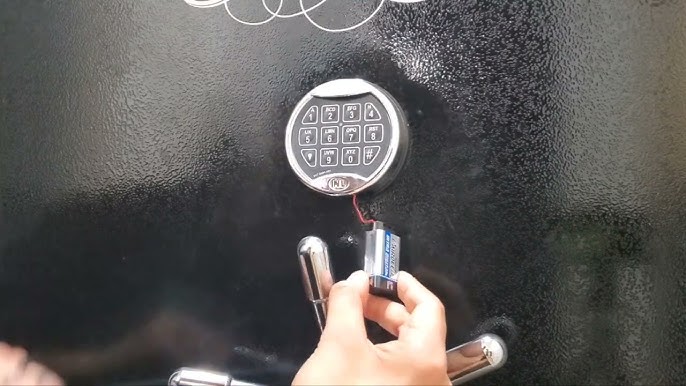
Credit: www.youtube.com
When To Contact Customer Support
Owning a Cannon Safe means trusting it to protect your valuable items. But what happens if something goes wrong? Knowing when to contact customer support can save you time, frustration, and possibly money. Whether it’s a small hiccup or a major issue, reaching out to the right resources can make all the difference.
Persistent Issues
Some safe problems may seem minor at first, like a keypad glitch or a door that sticks occasionally. But if the same issue happens repeatedly, it’s time to take action. Waiting too long can turn a manageable problem into a more serious one.
Ask yourself: Is this problem affecting the security of my valuables? If the answer is yes, don’t hesitate to contact Cannon’s customer support. Their team is equipped to address recurring problems and may offer solutions you hadn’t thought of.
An example: If your safe’s electronic lock isn’t responding after multiple battery changes, it’s likely more than just a dead battery. This is a clear sign you should involve customer support.
Warranty Coverage
Are you aware of what your warranty covers? Cannon safes often come with warranties that protect against certain defects and malfunctions. If your safe experiences issues within the warranty period, contacting customer support may lead to a free repair or replacement.
Take time to review your warranty details. Many customers overlook this step and end up paying for repairs unnecessarily. Call support and confirm whether your problem qualifies for coverage before spending money on fixes.
For instance, if your safe’s locking mechanism fails within the warranty period, customer support can guide you through the claim process—saving you both money and stress.
Finding Authorized Repair Services
Not all repair services are created equal. If your Cannon Safe requires professional repairs, make sure you’re working with authorized technicians. This ensures the repair is done correctly and doesn’t void your warranty.
Customer support can provide you with a list of certified repair professionals in your area. This saves you the hassle of searching online and guessing who’s qualified. Plus, authorized technicians are familiar with Cannon products and can often resolve issues faster.
A common example: If your safe’s hinges are damaged, a local handyman might offer to fix them. But without authorization, you risk further damage or losing warranty protection. Always consult customer support first.
Contacting customer support isn’t just about fixing problems—it’s about ensuring your safe continues to protect what matters most to you. Don’t let hesitation or uncertainty stop you from getting the help you need.
Preventative Maintenance Tips
Proper maintenance can extend the life of your Cannon safe. It also ensures it functions smoothly when needed. Regular care prevents issues and keeps your valuables secure. Follow these simple tips to maintain your safe effectively.
Regular Cleaning
Dust and debris can build up on the surface of your safe. Wipe the exterior with a soft, damp cloth every few weeks. Avoid harsh chemicals that may damage the finish. Use a vacuum or compressed air to clean vents and hard-to-reach areas. Keeping your safe clean ensures its components work properly.
Lubricating The Lock Mechanism
The lock mechanism is a critical part of your safe. Over time, it may become stiff or difficult to turn. Apply a small amount of lubricant specifically designed for locks. Avoid using oil-based products, as they can attract dirt. Lubricate the keyhole or combination dial every six months for smooth operation.
Inspecting For Wear And Tear
Check your safe regularly for signs of damage or wear. Look for rust, cracks, or loose parts on the exterior. Inspect the hinges to ensure they move smoothly without grinding. Test the lock to confirm it operates without resistance. Addressing small issues early can prevent costly repairs later.

Credit: cannonsafe.com
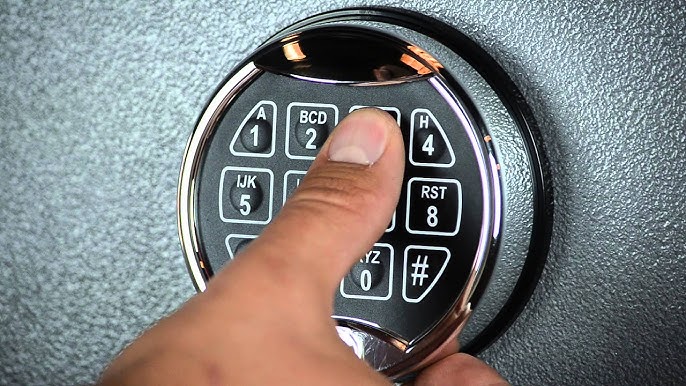
Credit: www.youtube.com
Conclusion
Troubleshooting your Cannon safe doesn’t have to feel overwhelming. Start with simple checks like the batteries or keypad. Many issues can be fixed quickly with basic steps. Always follow the user manual for guidance. For complex problems, contacting customer support is a smart choice.
Regular maintenance can prevent many future issues. A well-functioning safe ensures your valuables stay protected. Stay patient, and don’t rush repairs. With the right steps, your safe can work like new again. Protecting what matters most is always worth the effort.

